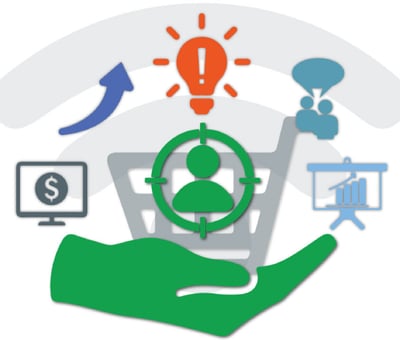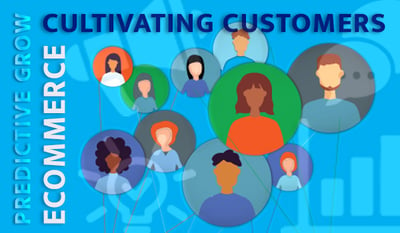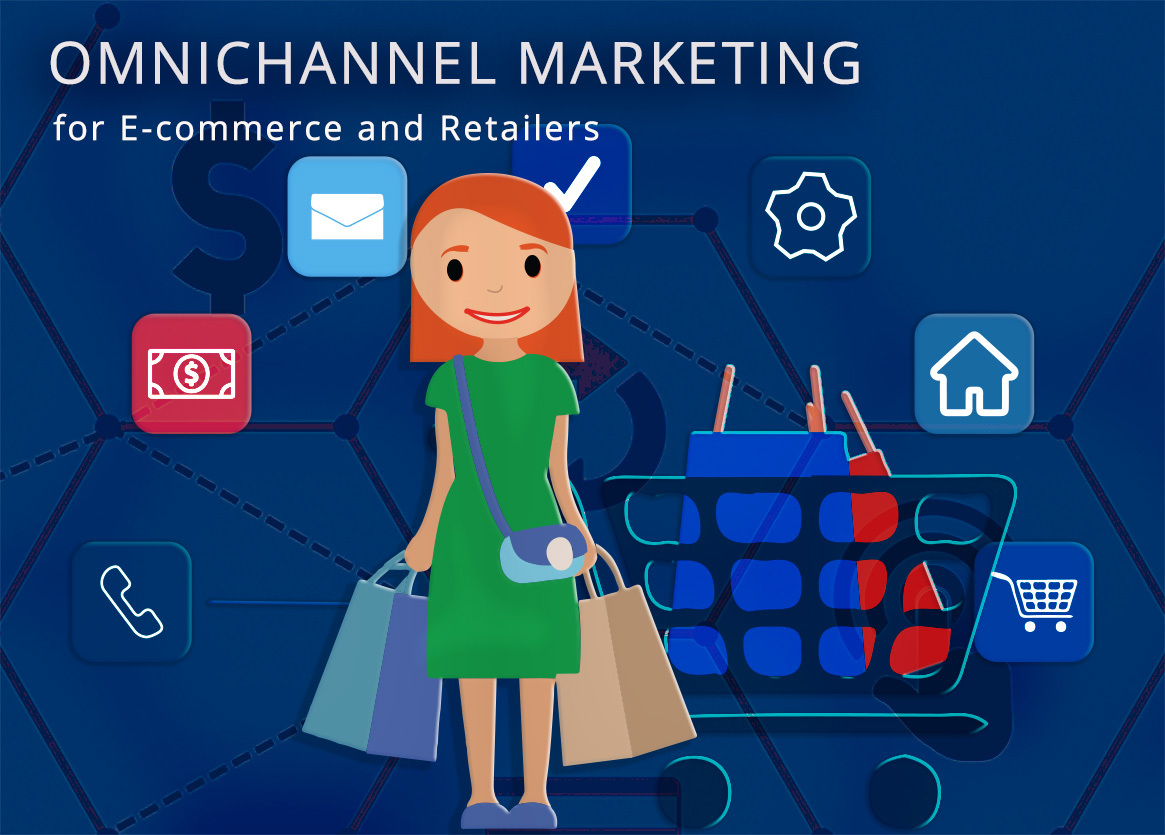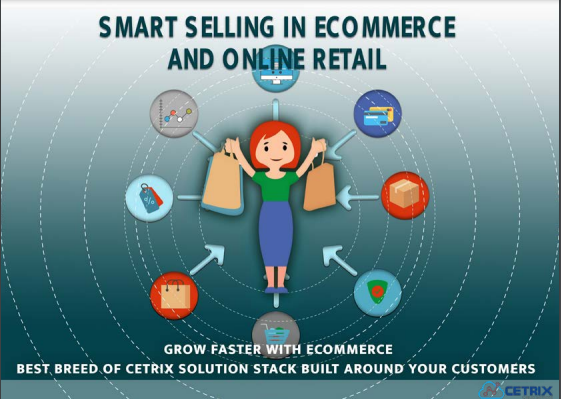Smart Selling in eCommerce and Online Retail
Improve customer experiences and increase sales with Smart Selling in eCommerce and Online Retail.

Smart Selling and the uses of AI in ECommerce
Smart Selling with AI in eCommerce
The widespread use of artificial intelligence (AI) in e-commerce is inevitable. AI is being applied to create virtual customer assistants, predict consumer behavior, personalize search results, and recommend products.
The implications of AI for eCommerce are profound: merchants can use AI to improve the customer experience, increase sales, and reduce costs. One of the main trends of AI in eCommerce websites is called Smart Selling.
Smart Selling is a term used to describe the use of artificial intelligence (AI) to improve the customer experience in eCommerce websites. The application of AI can help merchants personalize search results, recommend products, and provide a better overall customer experience.
The retail industry is undergoing a rapid change as the influence of recent advancements in artificial intelligence (AI) and eCommerce force businesses to adapt quickly. These innovative changes are occurring throughout the whole retail supply chain.
Read below and learn all about smart selling and the uses of AI in eCommerce websites.
The benefits of AI for eCommerce and retail websites
Predictability
For instance, eCommerce machine learning is making the retail sector very predictable. Retailers and manufacturers can now know actual customer demands and habits, letting them develop products that will sell at prices consumers would actually pay. This predictive analytics is also revealing supply chain bottlenecks and ecological concerns as companies produce more and more goods.
Eco-Friendliness
Fortunately, AI already provides solutions to these problems. For instance, retail is fast becoming a greener industry thanks to supplying chain optimizations that are now available. These optimizations can reduce fuel emissions while minimizing food waste.
Optimization
Retailers are optimizing everything through AI. They are maximizing their product layouts, trading premises, advertising strategies, and customer support.
Customer-centricity
Retailers use AI to draw insights from customer data that lead to more customer-focused opportunities. This practice is called customer-centricity. These opportunities will improve customer experiences through personalized product catalogues and services.
To become a customer-centric organization, your company needs to learn how to collect, leverage, and implement data in your decision-making processes.
Innovation
Many retailers and manufacturers utilize automation in all or some of their operations. These automated systems include customer assistance and product delivery and are expected to become ubiquitous with retail in a few years.
What are the uses of AI in eCommerce?
Retail companies use AI and AI-based eCommerce platforms to process and correctly interpret customer behavior to achieve specific goals and requirements. As a result, different companies can use AI very differently from one another.
The most common retail uses for AI include:
- Marketing: AI develops personalized recommendations and suggested product lists for customers
- Customer Service: AI-powered chatbots handle most routine customer support calls and interactions
- Staff management: AI allows stores to optimize their staff and working shifts based on customer activity
- Price prediction and optimization: AI lets retail companies modify their pricing strategies to match customer mood while remaining solvent.
- Supply chain optimization: AI allows for better route planning and on-demand deliveries that reduce food waste, mistakes, fuel, and financial losses
- Compliance with safety regulations: AI ensures all products meet the necessary safety standards including hygienic rules
Customer-Centric AI-powered eCommerce: Enterprise Level Value without Enterprise Level Costs
Conversion. It’s the word on every company’s mind. How can we convert more customers so that we can get more sales?
Large corporations like Amazon or Zappos have the resources to employ real-time eCommerce machine learning. They can extract insights and build large teams to implement any and every marketing strategy. Therefore, they convert more customers by understanding them more deeply.
But many smaller merchants do not have the budget to hire data scientists to analyze data using the latest and greatest AI eCommerce platforms. There seems to be a bottleneck that only allows the enterprise-level companies through.
Luckily, we have widened the smart selling bottleneck for you. By partnering with Cetrix, you can develop efficient customer-cultivating AI-enabled strategies using data-driven insights without breaking the bank.
We discovered that customer conversion strategies require that your company becomes data-driven, in order to cultivate core customers with the highest ROI. In other words, it’s all about converting the right customers.
Yes, a sale is a sale. But not all customers are the same. Some customers will only make low-value purchases from your clearance section and never return.
Other customers will find your site satisfies their values or meet their needs. They will return over and over again. They might even refer others to your site who may continue the cycle even further.
You must cultivate these customers to sell smarter, and you can do it by using an AI-based eCommerce Marketing Maturity Model
These customers expect you to give them shopping experiences that fully meet their needs. They want personalized advertisements that offer them value while pointing them in the right direction.
By doing this, you can develop a core customer base that will recommend and advertise your company to others who share their values or needs. You can then eliminate customers who don’t really need or want your products.
At Cetrix, we empower companies every day through cost-effective AI technologies for gathering and analyzing their customer data. This includes omnichannel smart AI operational capabilities that give you the look and feel of an enterprise-level corporation (without spending the enterprise-level money).
Customer Cultivation Using AI in eCommerce

Customers, much like seeds, must be cultivated to reach their full potential. Seeds require sun and water, but achieving customer cultivation requires deep emotional user experiences and frequent engagement. Customers want to be more than a number or a sale to truly become champions for your business.
The first step in cultivating customers is, of course, attracting them in the first place. By using your existing customer data, you can recognize where your core customers spend most of their time. Once you know where they are, you can understand their value to cultivate them.
Unlike other methods of customer conversion, customer cultivation attempts to find core customers who will give you the highest return on investments. These customers make additional purchases over time. Some may even bring their friends.
You can retain these core customers by:
- giving them free personalized content,
- connecting with them on social media,
- and using a consultative rather than sales-based approach to communication.
- Make them feel like you care about them as an individual, not just as another sale, and they will continue to advertise beyond your marketing
Machine learning through an AI-powered eCommerce platform can help you achieve these goals. Data-driven solutions can be great to achieve better customer segmentation.
More robust AI solutions can dig through your customer data to find the insights you need to develop unique cultivation strategies for each core customer base.
Data-Driven AI-Powered eCommerce Marketing
.png?width=400&name=3rd_a-image%20(1).png)
Customer Data, as well as to know to leverage Big Data, is essential to selling more and scale your online business. Companies require real-time data to develop decisions based on this efficient AI-enabled conversion model. Machine learning can then reveal who their customers are and what they value.
- For example, one customer may tend to buy from a company when the advertisements use messaging around being eco-friendly or sustainable.
- However, another customer might not care about being eco-friendly at all but tend to buy from the company when advertisements talk about being high-fashion or trendy.
Our AI eCommerce platform can help you identify and target both types of customers as well as others. Your marketing campaigns will reach the right customers at the right time.
Don't waste valuable time on customers that either won’t convert or will convert with a low ROI.
Customer Segmentation AI Applications in eCommerce

Once you know what your customers value, you can group them into segments. Grouping customers into segments keep the messaging personalized, without wasting precious time.
Ways to segment customers include:
- Demographics
- Geographics
- Psychographics
- Technographics
- Behavioral trends
- Needs
- Values
Because are numerous ways to segment customers, you need AI technologies to identify which large groups of customers exist already. A good AI solution can highlight buying behavior that can easily break up your customers into essential marketing segments.
If you need, find more about Buying behavior analysis.
You can then modify your campaigns to match the needs of your most valuable segments while providing a generic message to everyone else. Check out how to start segmenting customers with machine learning.
Get Started with an AI-Based eCommerce Platform

Ready to start using AI-powered eCommerce marketing like an enterprise-level retail company without the enterprise cost? Let’s get you started. Contact Cetrix at info@cetrixcloudservices.com or visit our Contact Us page for more ways to connect. We are ready to meet your needs 24/7.
Alternatively, you can learn more about our Retail and eCommerce solutions to grow your online business.
WATCH DEMOS
CASE STUDIES
GET THE EBOOK
Related Blogs

Cetrix was exactly what we needed ...
As a new Salesforce customer, it has been difficult for us to get reliable, smart consultants/programmers. Mark and his team were exactly what we needed. They communicated exceptionally well and worked with us to fully understand our needs. I look forward to working with Cetrix on future projects.
President, Aquasol & Poolsure

Going above and beyond to complete the job
Mark is great to work with ... He did a great job describing the solution in the proposal, was available when we needed him ... He went above and beyond to help complete our proposal on a very tight timeline.
Founder & CEO, Acutedge, Inc.

Easy to work with, quick and excellent outcome
Cetrix was easy to work with, worked quickly, and the work was excellent. Going into the job I didn't know exactly how to talk about what it was that our organization needed done with Salesforce, but they were able to easily figure out what our needs were and customize Salesforce for us. We were very pleased with their work.
The Diversity Center of Northern Ohio

Cetix has truly been one of my best experiences
Our team had never used a CRM system, but people at Cetrix walked us through every step as patiently as they could. What I really loved was that they were able to add valuable suggestions to enhance our CRM site ... Cetix has truly been one of my best experiences, and we now consider them as part of the team ... Because of Cetrix, our team can better communicate with our clients.
Director, HBCU Tours

Couldn't ask for a better experience
Mark was great! I couldn't ask for a better experience. Wait until you hear him on Skype; he is focused, patient and just the right combo of get'er done/calm. His written communication skills are outstanding. I'm looking forward to doing more work with Cetrix.

Very professional, patient, flexible and thorough
ScriptEd had the pleasure of working with Cetrix Cloud Services on a Salesforce Database Customization project ... the donation of services has allowed ScriptEd to efficiently and affordably build out the Salesforce CRM that we use to manage our programming ... Over the duration of the project, they were professional, patient, flexible, and thorough. ScriptEd is thankful for and would highly recommend the pro-bono services of Cetrix Cloud Services.
ScriptEd INC









